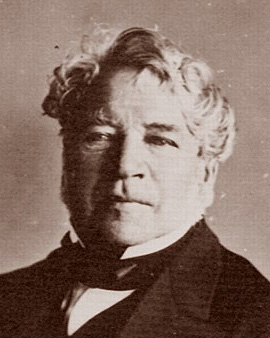


The French artist Louis Gabriel Eugène Isabey was a representative of the styles of romanticism and academic realism. Already his father Jean-Baptiste was active as an artist, first as a miniature painter and draughtsman, later also as a portrait painter. From him Louis Gabriel Eugène learned all the important techniques for his later artistic career. Louis actually wanted to become a sailor. But his father insisted on studying art. During his studies, the budding artist focused on the masterpieces in the Louvre. In 1824 he decided to rent an artist's studio together with the landscape painter Auguste Xavier Leprince. Leprince was known for his rural motifs. Unfortunately he died very young at the age of 27. After the death of his artist colleague Isabey moved to Saint-Siméon.
In 1831 the artist received an interesting commission. He was to accompany a diplomatic mission to Morocco. He declined this offer, however, as he had just returned from a commission trip to Algiers. As a marine painter, he captured scenes of the royal campaign in Africa in his paintings. The unclear political situation on the spot worried him, which is why he decided against a further trip. His artist colleague and friend Eugene Delacroix took over the commission. The resulting works are today considered classics of Orientalism. Despite this decision, Isabey's artistic career was marked by success. In the same year he became court painter. In 1832 he was also pleased to be appointed Knight of the Legion of Honor.
Isabey's art shows historical scenes and landscapes. He was also enthusiastic about maritime scenes. Harbours, bays and beaches, ships and shipwrecks or stormy scenes with thunderous waves on the high seas were the subject of his paintings. It is possible that his passion for seafaring can be seen in these pictures. After all, he originally wanted to become a sailor. Art offered him the opportunity to make this enthusiasm the subject of his paintings. Intense colours and contrasting light reflections are characteristic of many of his works. On a trip to England, Louis Gabriel Eugène Isabey studied the works of William Turners, one of the most important English artists of the Romantic period. Isabey tried to capture Turner's style in all its subtleties and facets. In the later years of his artistic career, he produced works of marine painting and paintings that often showed more brutal historical scenes such as duels, massacres or robberies. Louis Gabriel Eugène Isabey died in 1886 at the age of 83. Besides oil paintings, his extensive life's work also included watercolors, drawings and lithographs. To honour the artist for his life's work, a primary school in Montévrain was named after him.

The French artist Louis Gabriel Eugène Isabey was a representative of the styles of romanticism and academic realism. Already his father Jean-Baptiste was active as an artist, first as a miniature painter and draughtsman, later also as a portrait painter. From him Louis Gabriel Eugène learned all the important techniques for his later artistic career. Louis actually wanted to become a sailor. But his father insisted on studying art. During his studies, the budding artist focused on the masterpieces in the Louvre. In 1824 he decided to rent an artist's studio together with the landscape painter Auguste Xavier Leprince. Leprince was known for his rural motifs. Unfortunately he died very young at the age of 27. After the death of his artist colleague Isabey moved to Saint-Siméon.
In 1831 the artist received an interesting commission. He was to accompany a diplomatic mission to Morocco. He declined this offer, however, as he had just returned from a commission trip to Algiers. As a marine painter, he captured scenes of the royal campaign in Africa in his paintings. The unclear political situation on the spot worried him, which is why he decided against a further trip. His artist colleague and friend Eugene Delacroix took over the commission. The resulting works are today considered classics of Orientalism. Despite this decision, Isabey's artistic career was marked by success. In the same year he became court painter. In 1832 he was also pleased to be appointed Knight of the Legion of Honor.
Isabey's art shows historical scenes and landscapes. He was also enthusiastic about maritime scenes. Harbours, bays and beaches, ships and shipwrecks or stormy scenes with thunderous waves on the high seas were the subject of his paintings. It is possible that his passion for seafaring can be seen in these pictures. After all, he originally wanted to become a sailor. Art offered him the opportunity to make this enthusiasm the subject of his paintings. Intense colours and contrasting light reflections are characteristic of many of his works. On a trip to England, Louis Gabriel Eugène Isabey studied the works of William Turners, one of the most important English artists of the Romantic period. Isabey tried to capture Turner's style in all its subtleties and facets. In the later years of his artistic career, he produced works of marine painting and paintings that often showed more brutal historical scenes such as duels, massacres or robberies. Louis Gabriel Eugène Isabey died in 1886 at the age of 83. Besides oil paintings, his extensive life's work also included watercolors, drawings and lithographs. To honour the artist for his life's work, a primary school in Montévrain was named after him.
Page 1 / 2






